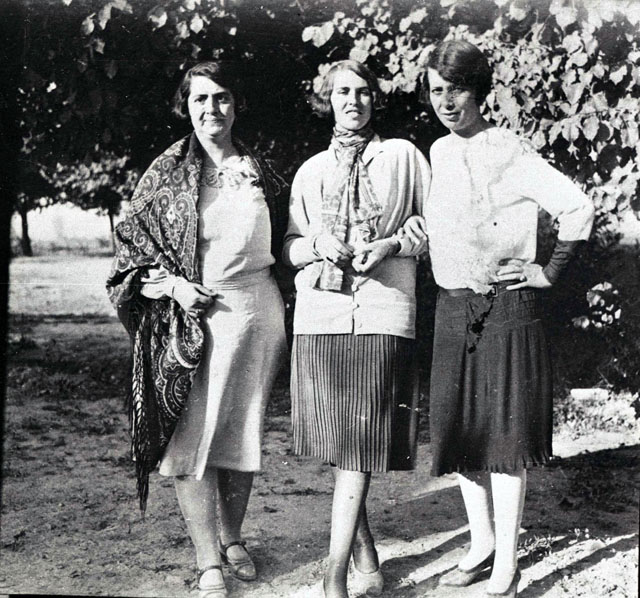Starting in the 1920s, Afghan women have struggled to obtain and keep their freedoms. Women’s rights have been a series of ups and downs for decades. Women’s freedom improves, but is stripped away from them with the change in leadership and government.
“Women have been deeply involved in the political and cultural lives of the world’s countries since the beginning – but their contributions have often gone unrecognized by men, who were the traditional historic face of secular and religious power,” said Dr. Tracy Barrett, Associate Professor of History at North Dakota State University.
On Feb. 2, 1919, Amir Amanullah Khan became ruler of Afghanistan after the death of his father. Khan ruled from 1919 to 1929. In this time, he was proactive in giving more rights to women. Khan and his wife, Soraya Tarzi, worked to modernize the countries and provide freedom for women.
According to Britannica, Khan “pushed for a series of Western-style reforms, including an education program and road-building projects.” During his time as a ruler, education for women was introduced to Afghanistan. “Women in Kabul gave up their veils and the first Afghan school for girls opened in 1921,” said Barrett. Soraya Tarzi set up the first women’s hospital in the country. According to Dawn, “Soraya worked actively to liberate the women of Afghanistan” she would “grant them their rights and encourage them to participate in nation building.”
During this time, other laws were passed to give women rights in their household. On Aug. 1, 1921, the Family Code Law was introduced which bans child marriages and limits polygemy in Afghanistan. The Afghan leader “discouraged the purdah, which is the Hindu and Muslim practice of secluding women behind screens or curtains to keep them out of view and can also include wearing veils or enveloping clothes like the burqa,” states Barrett. However, these changes towards modernism were not widely accepted across the state, particularly by “mullahs,” or the muslim religious leaders. Backlashes caused by these policies are what eventually led to Amanullah being overthrown in 1929.
On Jan. 1, 1929, Khan was forced to flee the country due to the violent revolts in response to his policies. Mohammed Nadir Shah gained control of Kabul, the capital of Afghanistan, and became the new ruler. According to the British Museum, Shah “quickly abolished most of Amanullah’s reforms.” The change in leadership meant a turn in women’s rights. Shah rebuked the progress and freedom that Afghan women had gained in the past 10 years. Shah ruled according to Shariah Law, requiring that women were veiled. Women who were getting education under Khan’s reign could no longer attend schools. Shah ruled until 1933 when he was assassinated and succeeded by his son Mohammed Zahir Shah who ruled for 40 years.
During these 40 years as a monarch, little steps to progress were made by Mohammed Zahir Shah. He made reforms slowly in fear that his predecessor would revolt against progressive changes. Eventually under his reign, women were able to get an education and enter the workforce. In the late 1950s a series of women’s rights laws passed. Women were no longer required to wear the burqa. The constitution in 1964 granted women the right to vote, join politics and gave men and women equal rights. Modernization continued; however, the reforms did not extend outside the urban areas. Tribal leaders in rural areas continued their traditional practices and pushed back against modernization.
In 1979, the Soviet Union invaded Afghanistan and the People’s Democratic Party of Afghanistan took control of the government. According to Canadian Women for Women in Afghanistan, “the communists were repressive of political dissidents but they promoted women’s rights while they were in power during the 1980s.”
After the fall of communist power in Afghanistan in 1992, the people engaged in a civil war between the mujahideen armies. Women’s rights were no longer enforced and were taken away. “Sexual violence against women by marauding armies was widespread as warlords took over the government,” said Barrett. As chaos erupted in Afghanistan, women’s rights were ignored. According to Canadian Women for Women in Afghanistan, “Women’s free mobility was reduced due to the war, and educated Afghan women were fleeing with their families to refugee camps in neighbouring countries and some migrated to the West.”
In 1996 the Taliban emerged from the war as the leaders of Afghanistan. They enforced extreme rules according to the Shariah Law. Women were required to observe purdah and men were required to grow beards. Women were banned from education, the workforce and leaving the house without a male relative. According to Bridgewater State University, “the Taliban indulged in forced marriages and rapes.” Disobeying these new laws resulted in extreme consequences from the Taliban. “In Taliban Afghanistan, women could be whipped in the streets for showing the skin of their wrists or ankles,” said Barrett. “More problematically,” she states, “women were forbidden to see male doctors and, since fundamentalist law ensured that only men could be doctors, that essentially meant that women had no access to medical care.”
After the 9/11 attack, the U.S. government intervened and took control of Afghanistan. During this transition, the U.S. focused on restoring women’s rights. U.S. Secretary of State Colin Powell stated, “The rights of the women in Afghanistan will not be negotiable.” Women were again granted equal rights with men. Women were again able to work, get an education, vote and work in government. Although progress was made, Afghan women were still living in fear that their rights would be taken from them as the Taliban were still a threat in Afghanistan.
“Now the Taliban are back in power and the Afghan women, whose desperate efforts to return to a level of freedom they haven’t enjoyed since the early 1990s have once more been snatched from their grasps, will be the ones who not only suffer the most, but who also feel the loss of freedom most keenly,” Barrett said.
